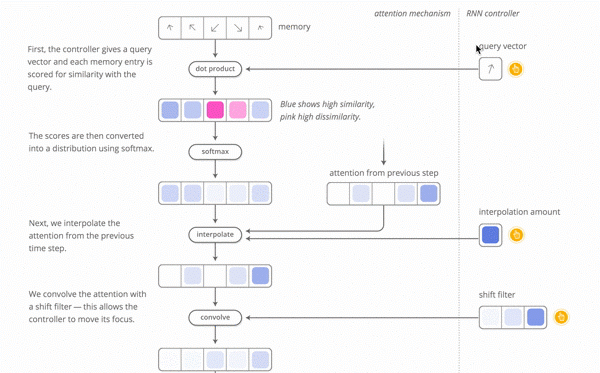Google Launched a New Machine Learning Journal and it support reactive diagrams
by noreply@blogger.com (brian wang) from NextBigFuture.com on (#2HP6Y)
In collaboration with OpenAI, DeepMind, YC Research, and others, Google has announced the launch of Distill, a new open science journal and ecosystem supporting human understanding of machine learning. Distill is an independent organization, dedicated to fostering a new segment of the research community.

We can create interactive diagrams and user interfaces the enable intuitive exploration of research ideas. Reactive diagrams allow for a type of communication not possible in static mediums. Hover over this diagram to see how a neural turing machine shifts its attention over its old memory values to create new values.
Unfortunately, while there are a plethora of conferences and journals in machine learning, there aren't any research venues that are dedicated to publishing this kind of work. This is partly an issue of focus, and partly because traditional publication venues can't, by virtue of their medium, support interactive visualizations. Without a venue to publish in, many significant contributions don't count as "real academic contributions" and their authors can't access the academic support structure. That's why Distill aims to build an ecosystem to support this kind of work, starting with three pieces: a research journal, prizes recognizing outstanding work, and tools to facilitate the creation of interactive articles.

Read more











We can create interactive diagrams and user interfaces the enable intuitive exploration of research ideas. Reactive diagrams allow for a type of communication not possible in static mediums. Hover over this diagram to see how a neural turing machine shifts its attention over its old memory values to create new values.
Unfortunately, while there are a plethora of conferences and journals in machine learning, there aren't any research venues that are dedicated to publishing this kind of work. This is partly an issue of focus, and partly because traditional publication venues can't, by virtue of their medium, support interactive visualizations. Without a venue to publish in, many significant contributions don't count as "real academic contributions" and their authors can't access the academic support structure. That's why Distill aims to build an ecosystem to support this kind of work, starting with three pieces: a research journal, prizes recognizing outstanding work, and tools to facilitate the creation of interactive articles.

Read more